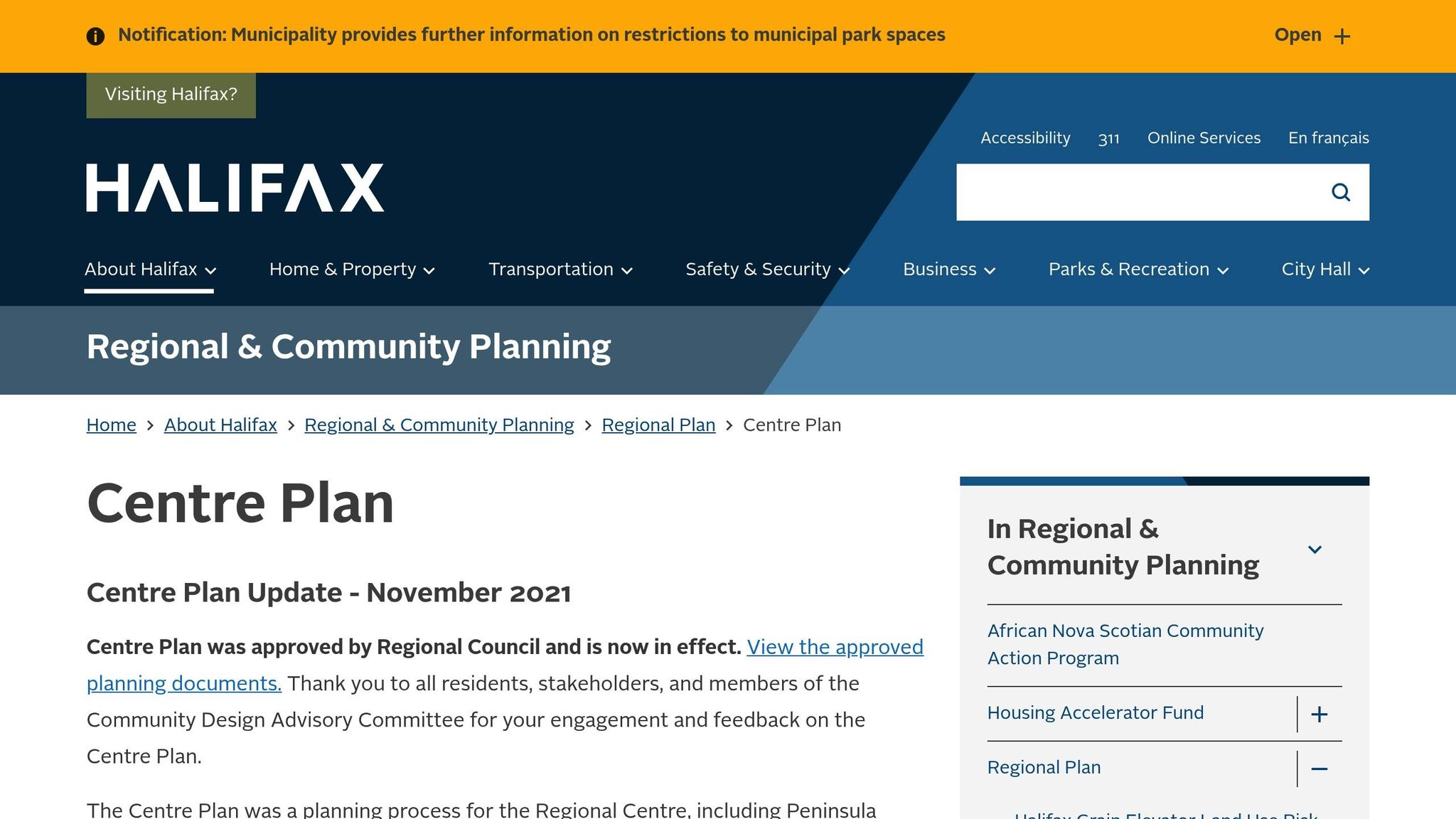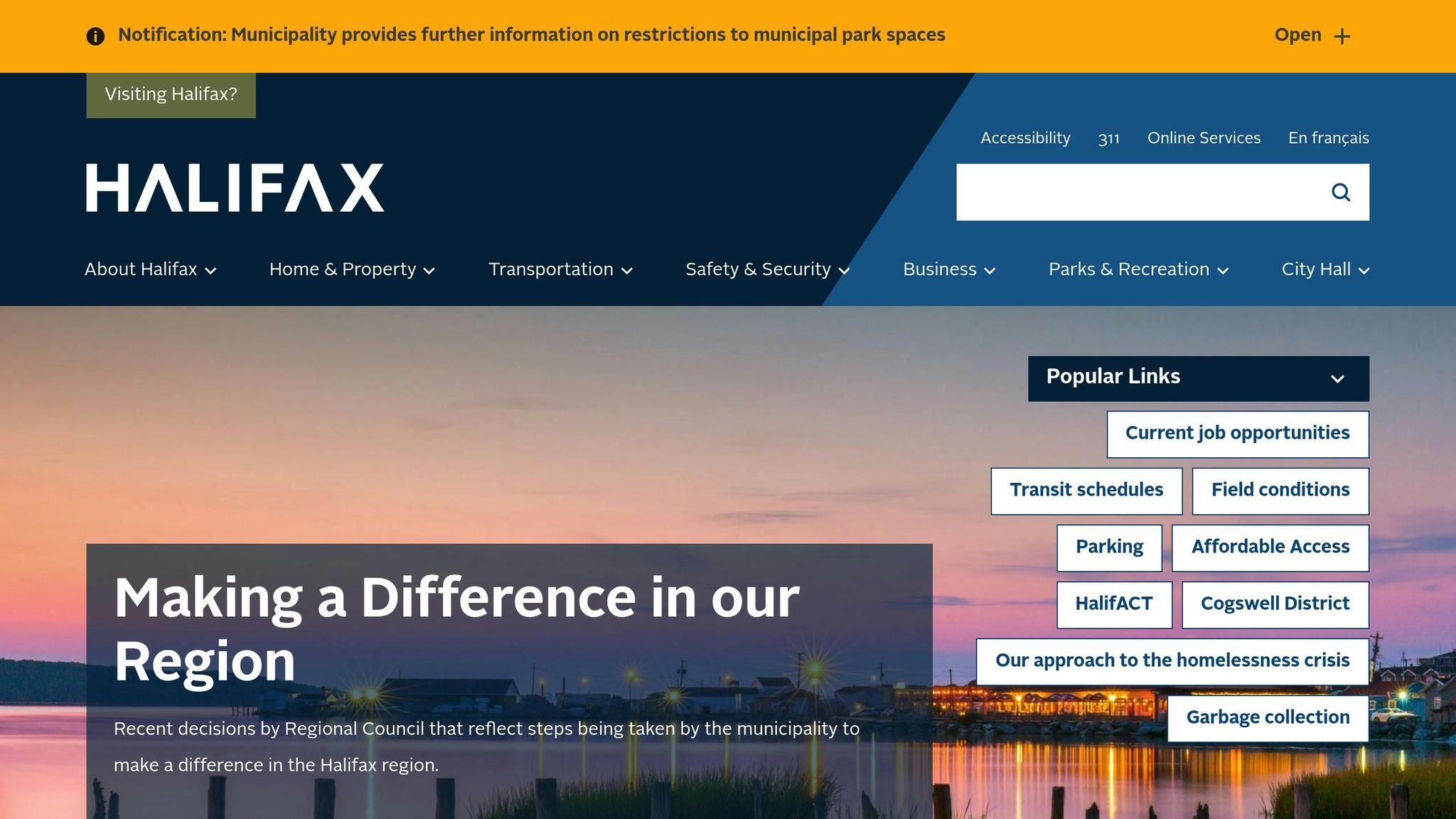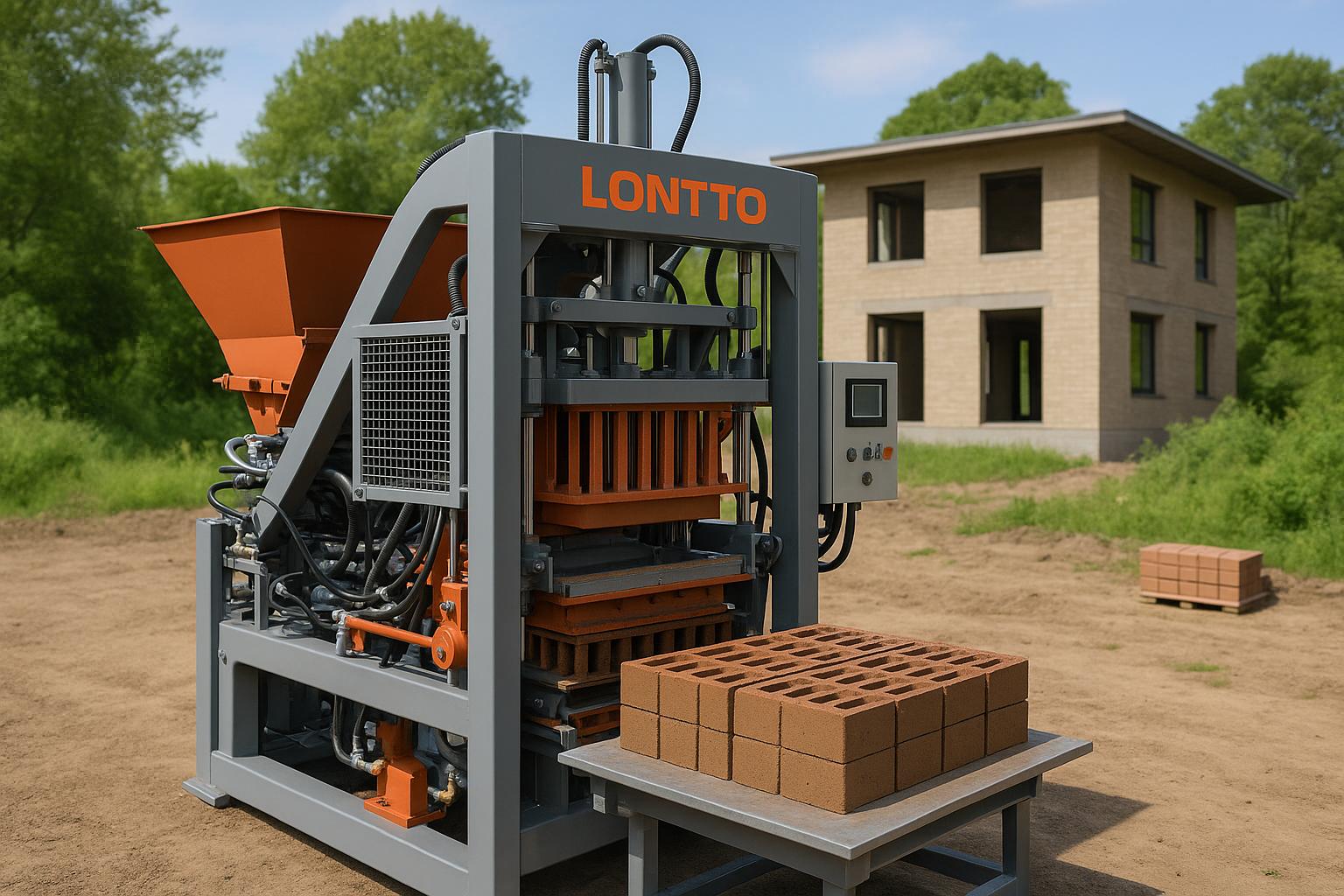Dartmouth Southdale’s ER-3 zoning changes open up suburban properties to multi-unit residential buildings, addressing Halifax’s housing shortage. Properties with lots of 600 m² or more can now accommodate up to eight units, including townhomes and small apartment buildings, with building heights up to 12 metres and lot coverage of 35–50%. Minimum parking requirements have been removed, offering more flexibility for developers.
Key highlights:
- Halifax faces a 1.0% rental vacancy rate and a shortfall of 20,000 units, with over 20,000 new residents arriving last year.
- The city plans to build 71,000 housing units, with C$79 million committed to planning and approvals.
- ER-3 zoning allows for mixed-use developments and faster approvals in designated growth areas like Dartmouth Southdale.
- Rental potential: Two-bedroom units rent for CA$1,950–CA$2,100/month with potential annual returns of 12–20%.
For property owners, this zoning update offers a chance to increase rental income and meet growing housing demand. Tools like Halifax's ExploreHRM map help confirm zoning, while integrated design-build services like Helio Urban Development simplify the construction process with fixed pricing and guaranteed timelines.
What ER-3 Zoning Permits and Why Property Owners Should Care
ER-3 Zoning Rules Under Halifax's Centre Plan

The ER-3 zoning designation represents a notable shift in suburban development under Halifax's Centre Plan. Previously, many areas were restricted to single-family homes or lower-density housing. Now, property owners have much more flexibility, with permission to build townhouses, small apartment buildings, or multi-unit residences.
To maintain the balance between increased density and the character of existing neighbourhoods, the rules around lot coverage, building height, and setbacks have been adjusted. These updates allow for tailored developments that fit the residential feel of the area. One significant change is the reduction in minimum parking requirements. This change reflects shifting transportation trends and the growing popularity of car-free lifestyles, freeing up space that can be repurposed for additional units or green spaces.
The zoning also allows for mixed-use developments in certain cases. This means property owners can combine residential units with ground-floor commercial spaces, opening up opportunities for diversified income streams. These flexible rules are particularly relevant in areas like Dartmouth Southdale, which has been identified as a key growth zone.
Dartmouth Southdale as a Designated Growth Area
Dartmouth Southdale’s designation as a growth area under the Centre Plan highlights its importance for new housing development. This status brings several benefits, such as a faster approval process and added municipal support for intensification projects. Its location - close to established communities and well-connected by public transit - makes it particularly appealing for rental property investments.
However, developments near Eisener's Cove come with additional considerations, including environmental assessments and careful planning to meet regulatory standards. On the upside, ongoing upgrades to municipal infrastructure, like water and sewer systems, roadways, and public transit, are expected to enhance property values and attract more renters.
ER-1, ER-2, and ER-3 Zoning Differences
For property owners, understanding the differences between lower-density zones and the ER-3 category is essential. Lower-density zones, such as ER-1 and ER-2, typically allow for single-family homes, duplexes, or small townhouses. In contrast, ER-3 zoning offers much greater flexibility, permitting multi-unit residential buildings and even mixed-use developments. This expanded scope can translate into higher rental income potential.
With ER-3 zoning, property owners can explore building designs that include shared entrances and common areas, which can lower both construction and maintenance costs. These zoning updates give owners the chance to maximize their property’s potential while aligning with market demands and preserving the community’s character.
HALIFAX Home Owners May Have Just Won THE LOTTERY : Halifax Proposed Zoning Changes January 2024
How to Check Your Property's Zoning and Building Restrictions
Understanding your property's zoning and building restrictions, especially under the new ER-3 zoning guidelines, is essential. Doing your research upfront can save you from unexpected delays and extra expenses.
Using Halifax Regional Municipality (HRM) Online Maps

The Halifax Regional Municipality offers a handy online tool called ExploreHRM. This interactive map lets you check your property's zoning designation with ease.
To get started, head over to the ExploreHRM website and type in your property address or search for "Dartmouth Southdale" in the search bar. The tool will pinpoint your property on the map, where you can zoom, pan, and explore various information layers.
In 2025, property owners in Dartmouth Southdale can use this tool to confirm if their land falls under the ER-3 designation or another zoning category. For instance, if you enter an address on Mount Hope Avenue or Research Drive, you can verify whether it’s part of the Southdale Future Growth Node, which is designated as Comprehensive Development District -1 (CDD-1) zoning [1][2].
The map also includes additional layers, such as environmental overlays and heritage designations, which may reveal further restrictions. Since Dartmouth Southdale is part of the broader "Dartmouth" community plan area, ensure you're viewing the correct district [1][4].
Once you've confirmed your zoning, you’ll want to dive into the specific restrictions tied to your property.
Property Research Checklist Before You Build
After identifying your zoning, it's time to review the detailed site-specific requirements that could impact your project.
- Height limits: ER zones usually allow buildings between 8.0 and 11 metres tall. However, as of 7 March 2025, new provincial regulations prohibit municipal planning strategies from imposing height restrictions that reduce residential density, particularly for mass timber construction [6].
- Lot coverage: In ER-3 zones, the maximum lot coverage varies from 35% to 50%, depending on your location [5]. You’ll also need to confirm minimum lot area requirements based on your intended building type. For example:
- 1–4 unit dwellings: 325 square metres
- Semi-detached dwellings: 230 square metres
- Townhouse interior lots: 130 square metres [5]
- Setbacks: These rules dictate how close you can build to your property lines. Generally, front setbacks require 6.0 metres, while side and rear setbacks need at least 1.25 metres. These numbers can vary, so double-check [5].
- Environmental restrictions: Properties near sensitive areas, like Eisener's Cove Wetland, may face additional development limitations. In many cases, residential development is outright prohibited in zones designated for environmental protection [6].
- Special area regulations: Some neighbourhoods within Dartmouth Southdale have unique rules beyond standard ER-3 requirements. These could include specific height limits, design standards, or density restrictions [5].
When to Get Professional Planning Help
While HRM’s tools are great for basic research, more complex situations might call for expert advice. The Centre Plan aims to simplify development within the Regional Centre, including Dartmouth, but overlapping regulations or unique property features can still create challenges [3].
If you’re unclear about specific rules or how they interact - like environmental overlays affecting ER-3 permissions - contact HRM Planning and Development for guidance [3]. Municipal planners can clarify how various restrictions apply to your property.
For more complicated cases, such as properties with multiple overlays or near environmentally sensitive areas like Eisener's Cove, hiring a private planning consultant can be a smart move. Consultants are particularly helpful for complex multi-unit projects or when navigating ambiguous zoning language. Though their services typically cost between $2,000 and $5,000 for an initial consultation and review, this investment can save you from costly setbacks during the permit process.
Calculating Building Potential and Rental Returns for ER-3 Properties
Once you've confirmed the zoning and restrictions for your property, the next step is to figure out how much you can build and what kind of financial returns you can expect. This process involves evaluating your development potential under ER-3 zoning rules, estimating construction expenses, and analysing the rental market in Dartmouth.
Determining How Many Units You Can Build
Start by assessing your buildable footprint. This includes factors like lot size, setback requirements, and height restrictions, all of which are outlined in local building codes. These codes also specify minimum unit sizes and design standards, which vary depending on the property. To get an accurate understanding of how many units your lot can accommodate, it’s a good idea to use Halifax Regional Municipality (HRM) resources or consult with a professional planner. This step is essential for laying the groundwork to estimate rental income and potential investment returns in Dartmouth.
Dartmouth Rental Rates and Return on Investment
Once you know how many units you can build, dive into the rental market to project your returns. Current trends indicate that two-bedroom units in Dartmouth typically rent for between CA$1,950 and CA$2,100 per month. Small, well-executed developments have been known to generate annual returns on investment ranging from 12% to 20%. To assess your project’s potential, compare your total development costs with the expected rental income. Don’t forget to factor in other variables like unit design, construction expenses, and property value appreciation when calculating your overall return.
For a more streamlined and financially sound approach, consider partnering with a design-build firm that specializes in small multi-unit rental projects. Their expertise can provide tailored advice to ensure your development is both efficient and profitable.
Getting Permits and Building Your ER-3 Project
Once you’ve nailed down your rental projections and planning, it’s time to tackle permits and construction. Here’s a clear path to help you navigate the process and get your project off the ground smoothly.
Step-by-Step Guide to Permits
Start by checking your property’s zoning using the Halifax Regional Municipality (HRM) online portal. Once you confirm your zoning, work with your team to create a design concept that outlines unit numbers, building footprint, and setbacks.
With your design in place, submit a development permit application to HRM. After approval, move on to preparing detailed construction drawings and engineering specifications for your building permit. Keep in mind that review times can vary, so build some flexibility into your schedule.
During construction, HRM will conduct inspections at critical stages to ensure everything is up to code. Coordinating these inspections effectively is key to staying on track.
Choosing Between Multiple Contractors or a Design-Build Team
Traditional construction often involves hiring separate professionals for each phase - architects, engineers, general contractors, and trade specialists. While this approach gives you control over individual aspects, it can lead to coordination headaches, unexpected costs, and delays.
On the other hand, an integrated design-build model combines all these roles under one team. This method simplifies communication, reduces scheduling conflicts, and offers a more predictable timeline and budget.
Here’s a quick comparison:
| Construction Approach | Timeline | Cost Certainty | Your Role | Risk Level |
|---|---|---|---|---|
| Multiple Contractors | 12–18 months | Budget overruns common | Project manager | High |
| Integrated Design-Build | 6 months guaranteed | Fixed, locked pricing | Property owner | Low |
Helio's 6-Month Fixed-Price Process
Helio Urban Development takes the guesswork out of construction with its integrated design-build model. They offer a fixed price of CA$160,000 per unit and guarantee completion within six months.
Helio’s approach eliminates budget surprises by locking in costs before construction begins. Plus, if the project runs over the six-month timeline, Helio pays penalties of up to CA$1,000 per day - a safeguard for your rental income, which could be as high as CA$8,800 per month for a typical four-unit building.
To keep you in the loop, Helio provides daily photo updates on progress. Their advanced scheduling system ensures all trades are coordinated internally, significantly reducing delays.
To maintain quality, Helio uses a triple-layer inspection process: internal checks by their team, multiple inspections by Professional Engineers, and a final inspection you select. This thorough system ensures your project stays on schedule and meets high standards, avoiding the common pitfalls of traditional construction methods.
sbb-itb-16b8a48
Dartmouth Southdale Building Considerations
When planning a project in Dartmouth Southdale under ER-3 zoning, it’s important to account for several local factors that could shape your design, budget, and timeline. These considerations build on earlier planning guidelines and are key to keeping your project on track.
Building Near Eisener's Cove Wetland
Eisener's Cove Wetland cuts through parts of Dartmouth Southdale, bringing stricter setback and environmental regulations. If your property borders the wetland, you may need to meet enhanced stormwater management standards, which could reduce your buildable area and increase costs. Halifax Regional Municipality's environmental mapping tools can help you confirm your property’s proximity to sensitive areas and identify any additional requirements. In some cases, properties near the wetland may also need an environmental impact assessment, which could add time and costs to your project. Beyond environmental factors, design requirements can vary depending on the unique character of the surrounding area.
Height and Design Rules for Different Areas
Height and design rules in Dartmouth Southdale are closely tied to adjacent land uses. For instance, properties next to lower-density zones must ensure smooth transitions in height and design to match neighbouring buildings. On the other hand, lots along major corridors might allow greater use of the full building envelope, offering more flexibility. Setback rules also vary depending on the zoning of adjacent properties, which can directly impact the number of units you can develop. To navigate these requirements effectively, review local guidelines and consult with professionals to understand how they apply to your specific property.
Monitoring Final Zoning Rules and Bedroom Limits
The Halifax Regional Municipality is still finalizing some of the ER-3 zoning details, so staying informed about these updates is critical. These upcoming rules could affect key aspects of your project, such as unit configurations, bedroom limits, and overall profitability. For example, draft zoning amendments might restrict layouts or the number of bedrooms allowed, which could influence rental income. Additionally, parking requirements are under review, and future changes could impact both design and budget planning. Regularly check HRM’s planning department announcements for updates, and consider working with local professionals who stay on top of zoning changes. Companies like Helio Urban Development integrate zoning compliance into their design-build process, helping projects align with current guidelines while maximizing development potential.
Understanding these considerations is essential to refine your project strategy and avoid unnecessary delays or complications.
Next Steps for Building in Dartmouth Southdale ER-3
Now that you’re familiar with the planning and zoning details for Dartmouth Southdale ER-3, it’s time to take action. The updated ER-3 zoning regulations present a prime opportunity for property owners to develop rental properties in this established suburban area. With monthly rental rates ranging from $1,950 to $2,100 and potential annual returns between 12% and 20%, this is a chance to turn your property into a profitable investment.
Step 1: Assess your property. Start by reviewing your property’s ER-3 designation and any associated building restrictions using Halifax Regional Municipality (HRM) tools. This step is essential to determine how many units you can build and to estimate your potential rental income.
Step 2: Rethink traditional construction methods. The usual approach of hiring separate architects, engineers, and contractors often leads to budget overruns of 30–60% and delays that can extend timelines from 8 months to over 18 months. These setbacks not only increase costs but also delay rental income, cutting into your profits as construction expenses continue to rise.
Step 3: Consider Helio Urban Development for a streamlined solution. Helio offers a fully integrated design-build service tailored for property owners constructing 4+ unit rental properties. As Nova Scotia’s only company specializing in this approach, Helio simplifies the process with fixed-price construction at $160,000 per unit and guarantees completion within six months. If they miss the deadline, they’ll pay penalties of up to $1,000 per day. You’ll also benefit from daily photo updates, triple quality checks (including inspections by professional engineers), and a 2-year warranty on all work.
Why start now? Halifax Regional Municipality is still finalizing some ER-3 zoning details, and getting ahead of the curve means you can start earning rental income sooner. Dartmouth’s rental market is strong, and early movers will be better positioned to take advantage of the demand.
Ready to turn your ER-3 lot into a profitable rental property? Contact Helio Urban Development to get started and see results in just six months.
FAQs
How will the ER-3 zoning change affect property values in Dartmouth Southdale?
ER-3 Zoning in Dartmouth Southdale: A Game-Changer for Property Values
The introduction of ER-3 zoning in Dartmouth Southdale is set to transform the suburban landscape by permitting the construction of multi-unit apartments. This shift isn't just about new buildings - it’s about unlocking the area’s potential for growth. By making room for more housing, the new zoning rules are expected to attract both investors looking for opportunities and tenants seeking modern, well-located rental options. The result? A likely surge in demand and, with it, a rise in property values.
For property owners, the benefits could be substantial. Rental income is expected to climb, and annual property appreciation rates could hit impressive figures - anywhere from 12% to 20%, depending on how the market evolves. When paired with Halifax’s broader efforts to encourage urban density through zoning reforms, this creates a promising outlook for sustained property value growth in the region.
What are the advantages of using a design-build approach for multi-unit projects under Dartmouth Southdale's new ER-3 zoning?
The Benefits of a Design-Build Approach for ER-3 Zoning Projects
Opting for a design-build approach for multi-unit residential projects under Dartmouth Southdale's new ER-3 zoning comes with some distinct advantages. By merging the design and construction phases into one cohesive team, this method simplifies the entire process. It not only reduces delays but also speeds up project completion by allowing phases to overlap - saving precious time and helping developers stick to tight schedules.
Another benefit is the reduction in miscommunication and unexpected changes, which often lead to costly disruptions. With design-build, better coordination means fewer surprises and more control over expenses. Plus, having a single team accountable for the entire project gives property owners greater confidence. Risks like cost overruns or delays are significantly less likely to derail the process.
For those eager to tap into Dartmouth's growing demand for rental housing, this approach offers a smoother, more predictable path to development success.
What should property owners consider when planning developments near the Eisener Cove Wetland in Dartmouth Southdale?
Property owners need to take a close look at how their projects might affect the environment. Issues like increased flooding, water runoff, and disturbances to local wildlife habitats should be carefully considered. By preserving natural vegetation and including green spaces in development plans, these risks can be minimized, helping to maintain the delicate ecological balance of the wetland.
Focusing on sustainable design and following environmental regulations is crucial to protecting the unique ecosystem of the Eisener Cove Wetland. Smart and thoughtful planning not only protects the environment but also adds to the long-term value of the property.



